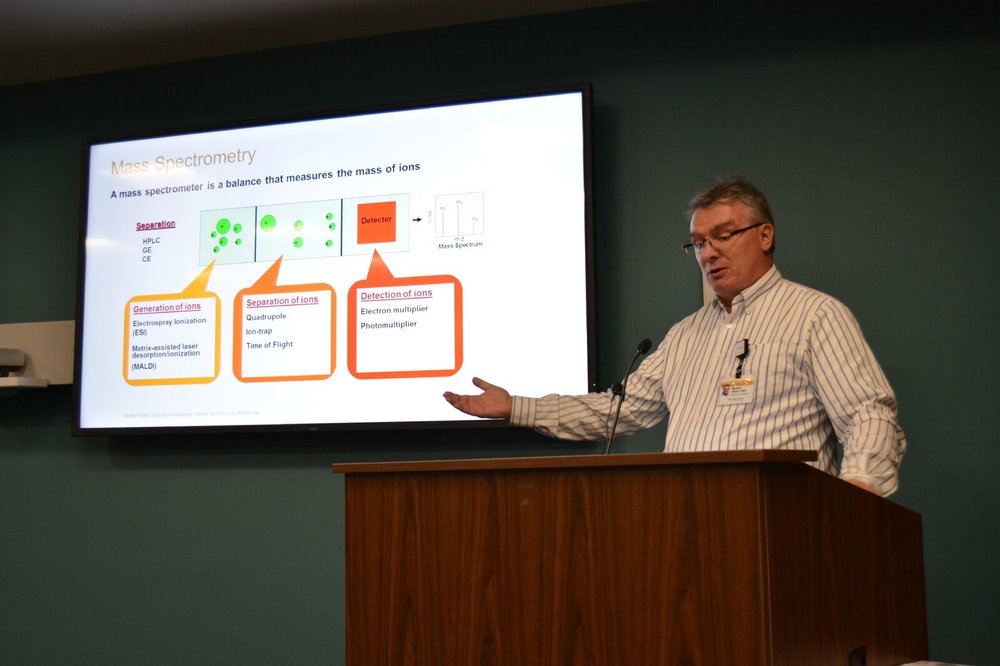We routinely use next generation sequencing, gene expression analysis, and mass spectrometry to profile cells and tissues from human patients and animal models to identify early molecular changes that happen in target tissues and organs during the initial development of diseases such as obesity, cardiovascular diseases, or dyslipidemias and fatty liver disease.
Our group has been developing novel methodologies to functionally study human genome variation, and to help understand how mutations and sequence variants that have been identified in large scale genetic studies (e.g. genome-wide association studies) actually affect the normal function of cells.
Work in our lab ranges from basic molecular biology to tissue culture, high-end sequencing and mass spectrometry, and computational data analysis.
Research Focus
|
|

Research Highlights
Proteomics, metabolomics and genomics approaches
We use mass spectrometry approaches for the analysis and quantification of proteins and small molecule metabolites to complement genetic analyses in a wide range of human disorders. This ranges from the analysis of lipoprotein particles isolated from human plasma samples, or the detailed analysis of liver biopsy samples from patients with non-alcoholic fatty liver disease. Our group has also optimized discovery proteomics analyses in non-human primate samples by using RNA-Seq data for improved protein identification in cells and tissues. Using these technologies, we explore the molecular changes in plasma, cells and tissues during the development and progression of cardiometabolic and age-related disorders using both humans and non-human primate models.
We have been developing novel technologies for the comprehensive characterization of proteins interacting with DNA and chromatin. Our work has resulted in a new approach called Hybridization Capture of Chromatin-Associated Proteins for Proteomics (HyCCAPP). This methodology enables the analysis of individual gene regions or promoter intervals, and the characterization of the bound proteins by mass spectrometry without any prior knowledge of binding proteins, or available antibodies. We are currently characterizing the effect of disease- and gene expression-associated promoter sequence variants on protein binding and promoter regulation.
TOPS
(Take Off Pounds Sensibly) is a large, non-profit weight loss support organization headquartered in Milwaukee, WI, with chapters across the entire U.S. TOPS has supported obesity research for the past several decades. As part of a large-scale genetic study, the Metabolic Risk Complications of Obesity (MRC-OB) Genes Study, our research focused on the analysis of the genetic contributions to obesity-related co-morbidities, especially elevated plasma triglyceride levels, a risk factor for cardiovascular disease. We conducted extensive fine-mapping and single nucleotide polymorphism (SNP) analyses for obesity-related lipid traits.
Since 2015, we have established the TOPS GENOME Registry, a data and sample repository to support research efforts focused on the contribution of genetic and lifestyle factors on the development of obesity, and the ability to loose weight successfully.
Non-human primate models
Our group has been involved in several programs to utilize non-human primate models in comparative studies of obesity and the metabolic syndrome. This includes the comprehensive analysis of changes in the liver as a result of dietary challenges or aging. Here, we integrate genomic, proteomic, and metabolic profiling to explore the complex networks of genes and pathways mediating the physiological changes. In a different study, we are developing methodologies to use both next generation sequencing and proteomic analyses to characterize the gut microbiome of non-human primates, and explore how the composition and activity of the gut flora fluctuates with changes in nutrition.
